By Kelly Hile
Having accurate fan data means you can optimize your design and get the highest possible performance from your products.
No matter where you are when you read this, you are probably not that far away from a fan. If you sit at your laptop, a small fan fits snugly inside your computer, making sure heat is dissipated. If you find yourself indoors, then it’s likely that an aptly-sized fan moves air through vents in the floor or ceiling to make the room comfortable for you. The use of fans and blowers can be traced back to as early as the middle ages, and even today they remain a staple in modern technology.
You might see a fan used on its own, such as a ceiling fan hanging in your home or the vent fan on your stove. But fans and blowers are also quite commonly used as components of both commercial and consumer products. Applications range from hair dryers to large data servers, from air purifiers to industrial heaters, and from leaf blowers to jet engines. As a part of a whole system, a fan needs to be both effective for its intended purpose and efficient, not overly contributing to the product’s energy consumption.
Fan Curves
In order to properly design a system that contains a fan, one must consider the fan performance. This is true whether the fan is a part of a household vacuum cleaner or the large ventilation system of an industrial building. A designer needs to know how much air the fan is capable of moving at the system operating conditions – the temperature, humidity, and pressure ranges the device will encounter. For this reason, engineers have long employed the use of fan curves as a quick, visual way to assess a potential fan for a design need. Fan curves also indicate the zones where a fan performs most efficiently, allowing designers to avoid overtaxing a fan and shortening its useful life.
Fan manufacturers publish these curves for nearly every fan on the market today. At the core of every fan curve is a series of flow tests conducted with precision devices that measure air pressure, temperature, and fan power. In order to maintain consistency across the industry, AMCA (the Air Movement and Control Association) started standardizing these tests in 1923. Today, nearly one hundred years after the first fan test procedure was published, AMCA continues to set worldwide standards for fan testing and certification.
Fan Testing
The standards for fan testing are outlined in AMCA 210-16 / ASHRAE 51-16 Laboratory Methods of Testing Fans for Certified Aerodynamic Performance Rating.
Many independent labs perform AMCA 210 testing, but such testing can become costly and impractical, particularly if a manufacturer wants to test various designs or products on a regular basis. Sending products offsite requires additional time and money to be built into the design process. With in-house testing, manufacturers can perform fan testing easily at each design iteration, instead of only when it’s time for certification.
At Airflow Sciences Equipment, we build custom wind tunnels that allows manufactures to move their fan testing in-house. We are committed to building testing equipment that fits the unique needs of our clients. That means no two AMCA Flow Tunnels are the same, because they are fashioned directly for the products clients will be testing and automated to collect all the unique data they need.
The custom flow tunnel shown below was designed by Airflow Sciences Equipment, and includes a touchscreen and data logging capabilities. In addition to pressure, temperature, and humidity sensors, the system includes instrumentation to measure device power and fan rotational speed. Because the end user had space limitations in their facility, the unit was specifically tailored to the end user’s space, maintaining 1% accuracy with a shorter than typical tunnel.
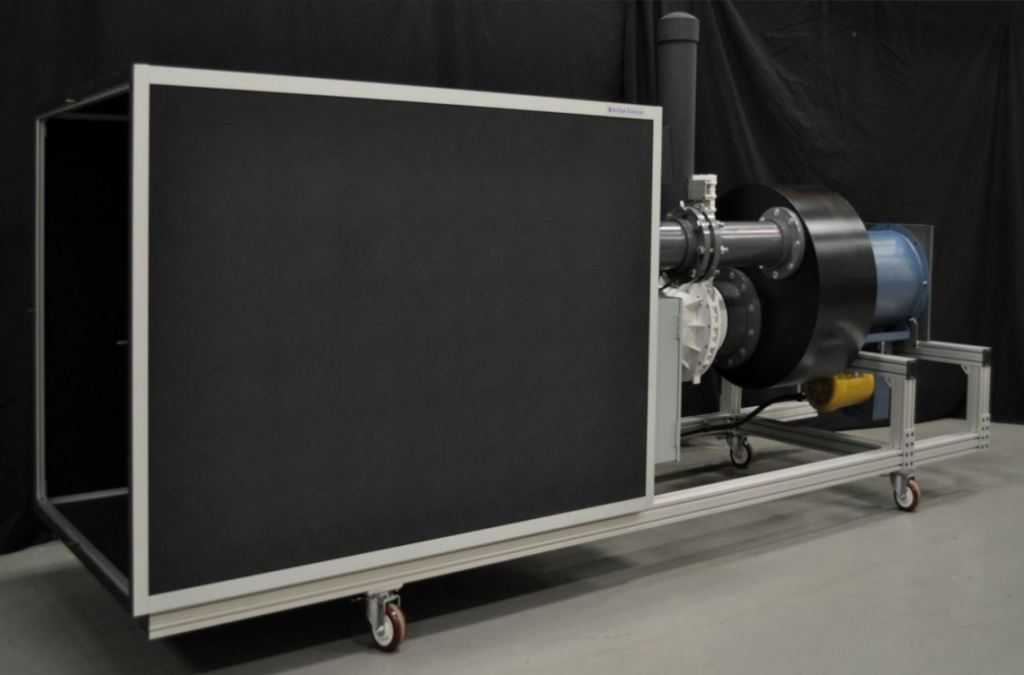
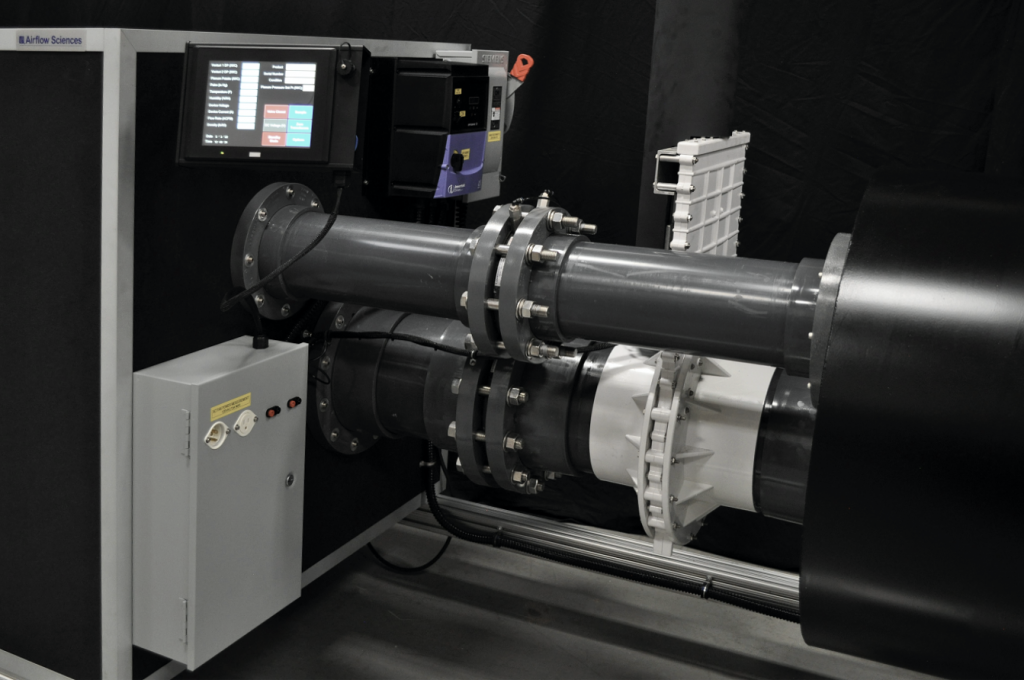
A custom flow tunnel capable of 3000 cfm
Custom AMCA/ASHRAE Flow Tunnels
With a custom flow tunnel designed by Airflow Sciences Equipment, the testing process for generating a fan curve is simple. After mounting the test fan to the flow tunnel, the user simply sets the desired static pressure, and the tunnel’s built-in exhaust fan automatically adjusts to achieve this set point in the plenum. A data logger reports the resulting test fan flow rate based on measurements and calculations that are performed automatically. Test fan RPM and power can be measured as well.
The figure below shows a small ventilation fan being tested on an AMCA flow tunnel. This tunnel uses a precision laminar flow element (LFE) to measure the air flow.
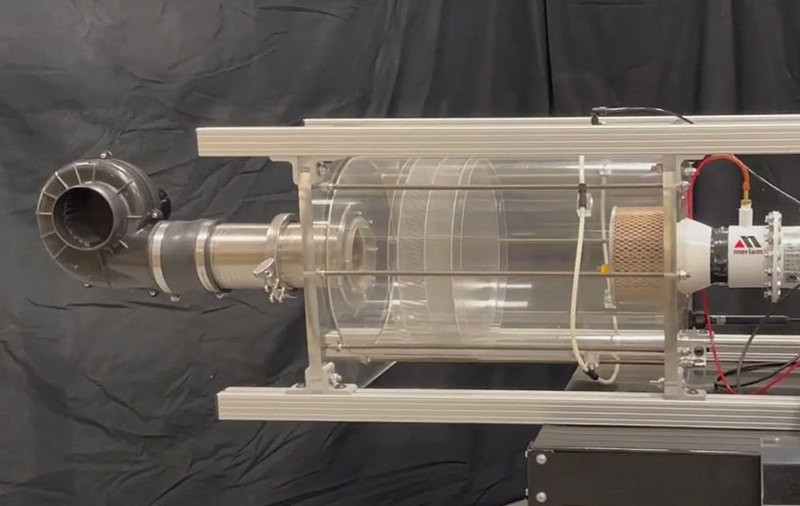
A fan is connected to a flow tunnel (100 cfm) for testing. The system will automatically adjust to achieve whatever test condition is set by the user.
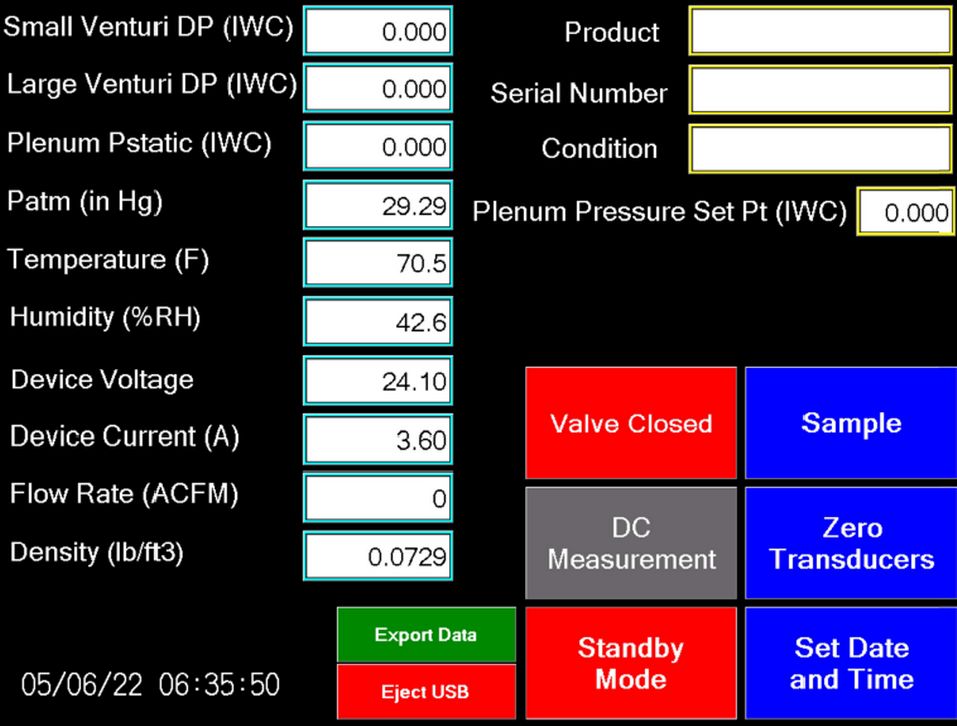
A user can set the test pressure and the real-time display will report the resulting flow rate, fluid properties, and fan voltage, all customized for the end user.
A fan curve is a graphical representation of how a fan performs in a range of operating conditions. One fan might be better at moving larger amounts of air (high flow rate) whereas another might be better at moving air through high pressure environments. When a flow tunnel test is conducted at a variety of pressures, the resulting data can be used to generate a fan curve like the example below, constructed from the pressure-to-flow-rate relationship.
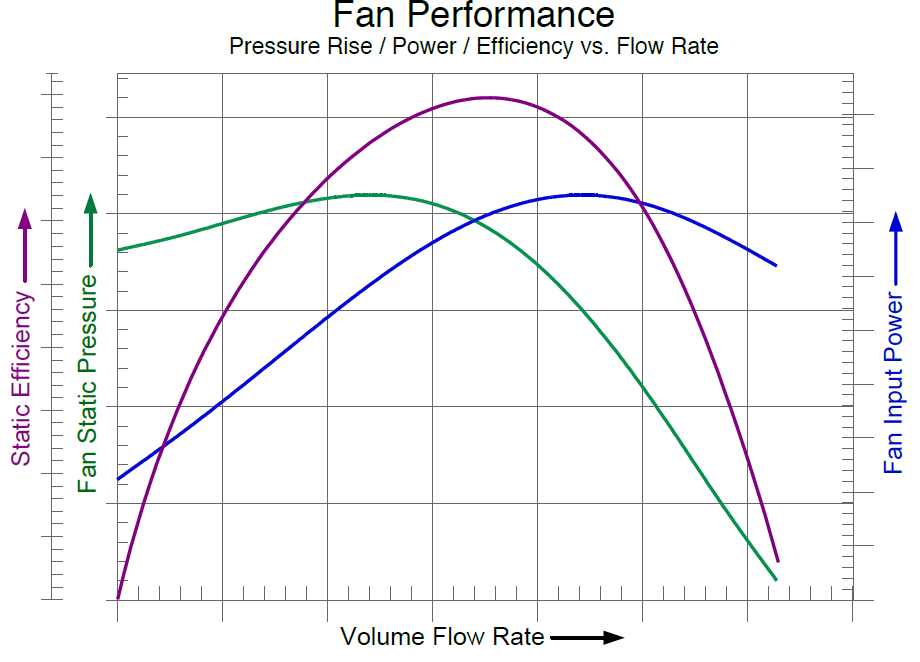
A custom flow tunnel makes it simple to produce a fan curve like this one.
With a customized flow tunnel from Airflow Sciences, we are making it easier than ever to assess fan performance and understand the full range of a fan’s operating capability. We specialize in customized systems that consider all of your technical business and budget needs.
AMCA/ASHRAE custom flow tunnels are customized by flow rate, data collection, and test set-up. We accommodate flow rates as low as 0.1 cfm or up to 100,000 cfm. Contact us for a quote, so we can get started building you a tunnel that works for you.
